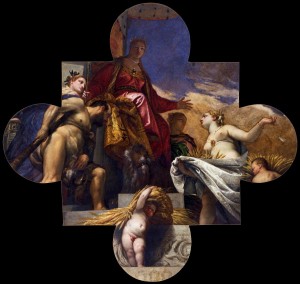 Intersections is a peer-reviewed series on interdisciplinary topics in early modern studies. Each volume focuses on a single theme and consists of essays that explore new perspectives on the subject of study. The series aims to open up new areas of research on early modern culture and to address issues of interest to a wide range of disciplines. More information on Intersections : brill.com/inte
Intersections is a peer-reviewed series on interdisciplinary topics in early modern studies. Each volume focuses on a single theme and consists of essays that explore new perspectives on the subject of study. The series aims to open up new areas of research on early modern culture and to address issues of interest to a wide range of disciplines. More information on Intersections : brill.com/inte
We are now soliciting manuscripts for a special volume in the series on: Personification: Embodying Meaning and Emotion
Personification, or prosopopeia, the rhetorical figure by which something not human is given a human identity or ‘face’, is readily spotted, but the figure’s cognitive form and function, its rhetorical and pictorial effects, have rarely elicited scholarly attention. As a communicative device it is either taken for granted or dismissed as mere convention. The aim of the proposed volume is to formulate an alternative account of personification, to demonstrate the ingenuity with which the multifaceted device was utilized by late medieval and early modern authors and artists. The fact that literary and pictorial genres designed to appeal to large audiences, such as festival plays and royal entries, often utilize allegorical personification, indicates that the figure was seen to accommodate a wide spectrum of tastes and expectations. Personification operates in multiple registers— sensory and spiritual, visible and invisible, concrete and abstract—and it deals in facts, opinions, and beliefs. With reference to the visible, current events and situations were represented by means of personifications that objectified various social groups and institutions, as well as their defining ambitions and the forces that motivated them. As regards the invisible, processes of thinking, feeling, and experiencing were bodied forth by means of personifications that revealed how these modi operandi were constituted.
Our interest in personification is motivated by several trends that have emerged over the last decade in cultural (historical) studies, whereby artistic expression is approached from the point of view of the body, performance, and cognition. Seen in light of these trends, personification (along with the texts and artifacts that employ the figure) offers many research opportunities. In methodological terms, personification is susceptible to an approach that balances a more semiotic analysis, concentrating on meaning effects, and a more phenomenological analysis, focusing on presence effects. This approach would entail foregrounding the full scope of prosopopeic discourse – not just the what, but also the how, not only the signified, but also the signifier.
The editors welcome contributions in English from multiple disciplines (literature, history, art history, etc.) that address the topic, contextualizing it within a wide range of geographical regions and languages. Papers may be written on one or more of the following questions :
The Theory of Personification : What ideas about allegorical personification allegory circulated in late medieval and early modern times ? How were its principles and workings described, either explicitly or implicitly ? How can modern neuropsychological insights concerning metaphorical thinking be linked to theories of personification based in contemporary literary theory and philosophy ?
The Perception of Personification : How did contemporary audiences perceive and interpret personifications ? How did they react to them and make use of them? Did the device fulfill instructive, persuasive, propagandistic, mnemonic, or even meditative and contemplative functions ? To what extend did personification stimulate the imagination or the inner eye ? What about the element of playfulness?
The Means of Personification : How was the device constituted ? What (self-)descriptive naming procedures were involved ? What kind of visual and verbal interactions were involved? What clothes, attributes, gestures, facial expressions, positions and actions ? What courses of events or chains of thought, aided either by dialogue (in plays) or inscriptions (on prints) ?
The Context of Personification : What were the wider circumstances within which personification and genres based on personification allegory came to be employed, and how do these circumstances help to explain both the contents and effects of the device in practice? Did particular religious, social, and political situations stimulate its use ?
A separate colloquium is being planned. Alternatively, in order further to develop the topic and to foster prospective contributions, clusters of authors will be invited to participate in a series of panels on the theme of personification, to be proposed for the Renaissance Society of America’s 2014 Annual Meeting in New York. Similar panels may also be proposed for the 2014 Sixteenth Century Studies Conference in New Orleans.
The final collection of essays will appear in 2015. The editors are Bart Ramakers and Walter S. Melion.
Proposals (300 words) for contributions should be sent electronically no later than June 1, 2013 to:
- Bart Ramakers (University of Groningen): bamramakers@rug.nl
- Walter S. Melion (Emory University): wsmelio@emory.edu

Leave a Reply
You must be logged in to post a comment.